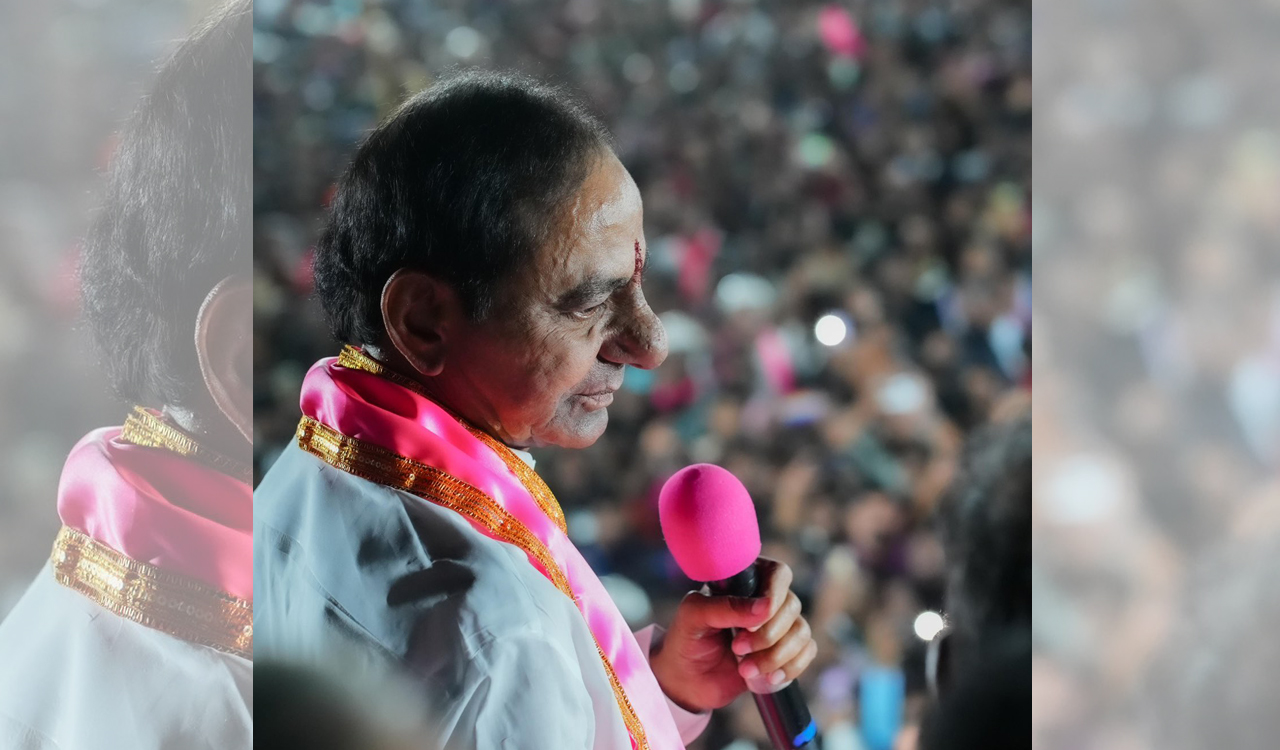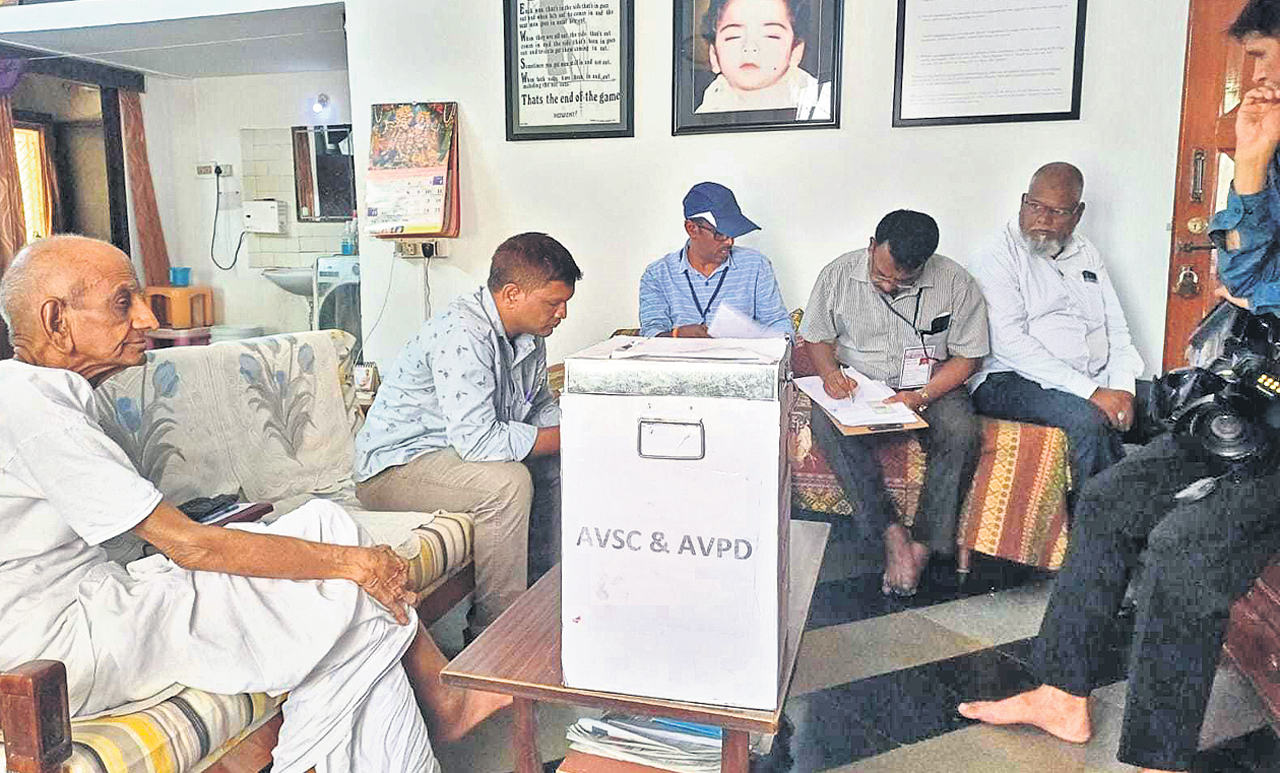
A separate mango board on the lines of Coffee, Tea and Rubber Boards will help farmers not only get MSP for the crop but also address the many problems facing them
Updated On – 23 March 2024, 10:55 PM

By KSS Seshan
Mango is the most important fruit crop produced in India. They are grown in an area of about 1.5 million hectares with an annual production of about 11 million tonnes, which accounts for more than 55% of the world’s total production. Other major mango-producing countries are China, Thailand, the Philippines, Indonesia, Brazil, Nigeria and Egypt. Historically, the cultivation of mango trees is believed to have existed in our country for nearly 6,000 years. There are references to the mango in our epics and Puranas.
In India, mango is cultivated mostly in Uttar Pradesh, Andhra Pradesh, Telangana, West Bengal, Karnataka, Kerala, Bihar, Uttarakhand, Punjab, Haryana, Maharashtra and Gujarat. The north and eastern Indian varieties are of late crops when compared with southern and western varieties.
Since ages, a mango tree has been described as Kalpavriksha or the wish-granting tree. India is said to have about 1,000 varieties of mangoes. Most of them have eco-geographical features induced for optimum yields. Banaganapalli, Totapuri and Neelam are such region-specific varieties in the Telugu States of Andhra Pradesh and Telangana. Kesar in Gujarat; Ratna, Ratnagiri and Alphonso in Maharashtra; Mankurad in Goa; and Dashehari and Langra in Uttar Pradesh are popular varieties in their respective regions. Uttar Pradesh ranks first in mango production accounting for 25% of the nation’s total production. The two Telugu States with an estimated 2,250 tonnes of annual production stand next to Uttar Pradesh.
Krishna, Vijayanagaram, Visakhapatnam, West and East Godavari, Kadapa, Tirupati and Chittoor districts in Andhra Pradesh; and Warangal, Nalgonda, Adilabad, Medak and Rangareddy in Telangana are known for mango cultivation. In Rayalaseema, particularly in the districts of Chittoor, Annamayya, Tirupati, Kadapa and Kurnool, it has become a mono-crop as every inch of cultivable land has turned into a mango orchard.
Broadly there are two types of mango varieties. The commercial ones are solely meant for juice and pulp factories and the other table varieties are for domestic consumption. Commercial varieties like Totapuri, Neelam and Neelisha fetch good revenues from pulp factories.
India produces about 11 million tonnes of mangoes annually, accounting for over 55% of the world’s total production.
Native to India
Mango is native to India and is believed to have originated in the foothills of the Himalayas dating back to 4,000 BC. There is evidence to prove that the mango originated in the Indo-Burman region and spread eastwards. The fruit is said to have travelled with human migrations from Asia to the Middle East, East Africa and South America in around 400 AD. In the beginning, it moved from Southeast Asia and the Malay Archipelago and by the 7th century, it reached China. Chinese traveller Hiuen Tsang, who visited India (632-645) is said to have introduced Mango to China. In China, mangoes were the subject of the “mango cult” during the Cultural Revolution under Chairman Mao Zedong. The mango became the symbol of his love for the common people. Today mango is cultivated in around 89 countries worldwide.
Mangoes always attracted royal patronage from historical times. Asoka is said to have laid several fruit-bearing gardens, including the mango, during his reign. The Delhi sultans like Firoz Shah Tughlaq developed many mango orchards in and around Delhi mostly to combat food scarcity in those days. Akbar, the great Mughal emperor (1556-1605), got planted what came to be known as Lakh Bagh, with one lakh mango trees in Darbhanga, Bihar, in his empire.
The fruit is irrevocably linked to Indian culture and religion. Mango leaves are used to decorate archways and doors during weddings, festivals and other ceremonies. In several parts of Tamil Nadu, mango is referred to as one of the three royal fruits along with banana and jackfruit for their sweetness and flavour. Its twigs are used in havana and homams as they are considered sacred. Poet Kalidas has written poems in Sanskrit in praise of the mango. There is a stone sculpture in the Ellora caves depicting the Jain Goddess Ambica in a sitting posture under a mango tree.
There are about 1,000 varieties produced in the country
Flourishing Farms
Mango orchards generally are beset with numerous natural impediments. Lack of rain and drought is a common problem facing farmers in raising mango orchards. Heavy rains and hailstorms bring havoc on the orchards as all the flowering gets ruined due to untimely rains. Mango farmers will be at their wits’ end whenever there is failure of the crop due to such unforeseen exigencies. In a few regions like Rayalaseema, mango is the only crop to sustain farmers as all the farming land is used to raise mango crops. The same is the case in almost all the north Andhra districts too. Though marketing has become easy for mango growers with the mushrooming of pulp/juice factories, the management of these factories denies fair prices for the farmers.
A separate mango board on the lines of Coffee, Tea and Rubber
Board, if established, will take care of the mango farmers in matters of not only getting a minimum support price (MSP) for the crop but even addressing the problems connected with procuring manures and fertilizers, spraying pesticides, pest control etc. At present, mango growers, for marketing the crop, are under the mercies of the management of private pulp factories who form cartels and through questionable ways try to buy the fruit at throwaway prices during the season causing huge losses to the growers.
There is also a need to explore overseas markets for mangoes. In Europe, the US and other Western countries, there is a great demand for Indian mangoes. But as the Indian farmer is not aware of the latest methods of grading, preserving, packing and transportation mechanisms of the produce, he is left behind in the international market. The mango farmers must be educated and encouraged with expertise from governmental bodies to tackle the challenges in exporting the produce and reap economic benefits.
Apart from input subsidies to buy manures, fertilizers and pesticides, the government also needs to provide easy term loans for the purchase of farm equipment like tractors, rotavators, JCBs, sprayers, sprinklers and water transporting tanks. As drip irrigation is proved an efficacious method to irrigate the orchards, the needed pipes and concomitant materials must be subsidisedbesides providing technical advice and help.
Periodic ploughing of the orchards is another expensive exercise in mango farming. With the escalating fuel prices, farmers feel the burden of hiring the needed tractors for ploughing. If only the government provides community tractor services at subsidised rates, it would lessen the burden of small and marginal mango farmers. Agricultural universities and horticulture departments of the States could conduct orientation programmes and periodic meeting of farmersto educate mango growers on the nuances of the cultivation and management of mango orchards. Setting up model mango farms at select places for the benefit of the growers will not only serve as a training ground for farmers but will also encourage enthusiastic young people to take up mango farming. A mango board to address the problems and also to alleviate the woes of mango farmers of the country must be positively looked at.
Mango Man
Haji Kalimullah Khan, an accomplished horticulturist in Uttar Pradesh, is known for his expertise in growing mango gardens and breeding newer varieties of the fruit. Kalimullah came to be popularly known as the ‘Mango Man of India’ for his passion for growing mangoes. He hit the headlines a few years ago for growing 300 varieties on one single tree using grafting techniques. Using the propagation techniques of grafting, he has developed several new varieties of mangoes some of which have been named after celebrities and political leaders like Tendulkar, Sonia Gandhi, Akhilesh Yadav, Narendra Modi and Amit Shah. Anarkali, a new strain of mango he developed, has the rare distinction of having two different layers of pulp with two different tastes. In a way, it is a fruit within the fruit. Kalimullah was awarded Padma Shri in 2008.
Mango Capital, City
Krishnagiri town in Tamil Nadu is euphemistically called as the ‘Mango capital of India’. The district produces nearly 3 lakh tonnes of mangoes each year. This makes mango farming, processing and pulp making a big industry in the region. Srinivasapuram in Kolar district of Karnataka is known as the ‘Mango city’ of India. Damalcheruvu in Chittoor district of Andhra Pradesh, was once known as a major centre of Mango business due to the numerous mandies it had.
The two Telugu States account for an estimated 2,250 tonnes of annual production
Foreign Exchange Earner
Mangoes have great export avenues and are big foreign exchange earners. India and Pakistan are the predominant suppliers of mangoes to West Asian markets and to the European Union. However, the US, because of its proximity, imports the fruit from Mexico. A large part of Indian mangoes goes to the Gulf countries. About 13,000 tonnes of Alphonso variety is exported to the Middle East, UK and the Netherlands every year. Kesar, Alphonso, Dasheri and Banganapalle are the most popular varieties exported.
With the collaboration of the Ministry of Agriculture and Farmers Welfare and APEDA, India exported 22,963.78 mtof mangoes worth $48.53 million in 2022-23, while in the current year 2023-24 (April-August), India exported 27,330.02 mtof mangoes worth $47.98 million. There has been a significant increase in the export of mangoes in 2022-23. In the season 2023, India exported mangoes to 41 countries by exploring new destinations such as Iran, Mauritius, Czech Republic and Nigeria.
Wonder Fruit
If the mango is the King of Fruits, there is also a King of Kings among the mangoes and it is Kalepadu. This is a special variety which has very unique features both in its look and taste. Small in size, round in shape, dark green in colour, and having a small stone (nut) inside with a lot of juicy pulp, the Kalepadu variety has a long shelf life. It is the unique taste of the lustrous fruit that makes it so different from all other varieties of its ilk. Because of its small size and unique taste, many families in south India used to serve Kalepadu fruit in formal feasts and during marriages. However, with the passage of time and with the advent of buffet culture, Kalepadu disappeared from the menu.
Legend has it that the fruit is named after a 19th-century British Collector of North Arcot (Chittoor, before 1911) Thomas Cawley. Enchanted by the delicious taste of the fruit, Cawley popularised it and soon people in the district identified the fruit with the Collector. Pronounced as Kale, with an addition of Pandu, (fruit), over a period, the name Kale Pandu got corrupted to become Kalepadu.
(The author is retired Professor of history at University of Hyderabad and an avid mango orchard grower)
Source | Powered by Yes Mom Hosting






